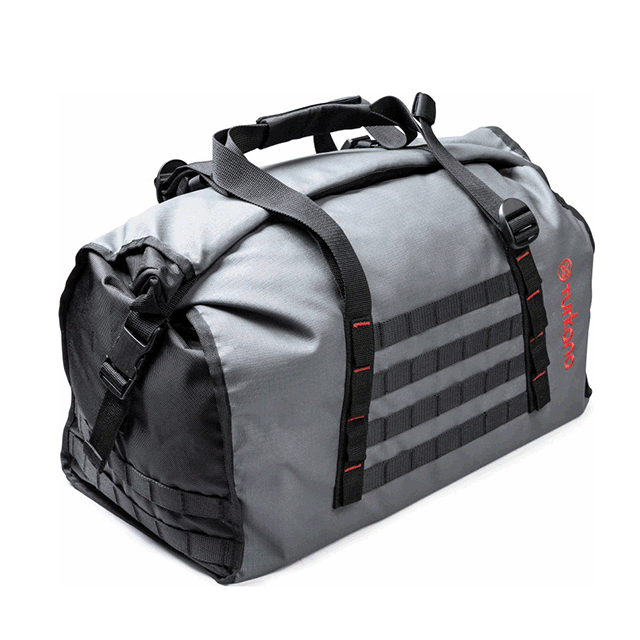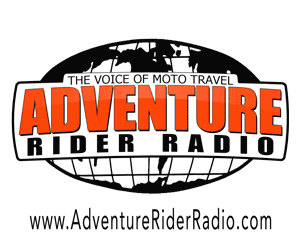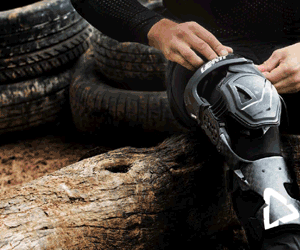“A friend used to ride a beautiful matt black Ducati Monster, and I figured I would look cool on it too. Although the reason that I have kept riding is entirely different. I enjoy the solitude, that peace of mind and the strong feeling of independence and freedom from being able to go anywhere. I like that I am closer to the environment I pass through, that I don’t have to study bus timetables and that I am faster than the dogs running after me. It’s a great way to break the ice and start a conversation no matter how remote the place.” – Jan Haueter

The idea for his current overland adventure started two years before his present journey when he was on a trip to Iceland. “At that point, I didn’t know if I would ever do a longer trip but just wanted to experience that way of traveling. Moving every day, carrying little and exposing myself to whatever came around the next corner. I loved every minute of it. Then my mother passed away from cancer, a long relationship ended, and I knew that I had to make some career changes. Call it whatever you want, but I felt I was standing at a crossroad and I knew I had the opportunity to do something I’d always dreamt about for years.” It was never just about motorcycling or going the distance for Jan. “I wanted to see places like Patagonia or Alaska, learn a new language and experience a culture that was so different from my own that it would challenge me. Since I would start in November, South America ticked all the boxes.” From Buenos Aires to Tuktoyaktuk via Ushuaia.

“I wanted to get everything right on equipment and plan as little as possible for the journey itself. Basically, prepare for everything and then head out the door. I knew I’d ride South from Buenos Aires to Ushuaia and then up, but I had no plan beyond the initial eight days. As for equipment, I studied what other adventure motorcyclists rode with, what was important to them and what didn’t hold up in the real world. I compared packing lists, worked on the bike and set aside every tool used so I could bring it along. At that point, I didn’t yet know anyone else who had done something like this, so a lot of time was spent on research.”

“There are of course tough riding days with crashes, wrestling with the cold, altitude or fatigue. Looking back though, these are usually also at the same time my fondest memories of the journey. The most difficult moments for me were usually when I was stuck somewhere. Whether that was lying in bed with a fever for over a week in Quito or dealing with customs in Honduras. Especially the latter involved a steep learning curve for me. Nicaraguan immigration refused entry due to the tragic crisis that is still ongoing. I decided to go back to Panama and ship the bike by a container with other motorcyclists around to Honduras. The export was easy, but once in Honduras, I got a taste for the bureaucracy and corruption in Central America. The process to release the bikes seemed to be a matter of opinion and days just flew by with what felt like no progress being made. Every day some new invoice or requirement would emerge. A few days in I just knew it was going to be a waiting game no matter how fast we would deal with that day’s requirements. It was a grind, and over the course of two weeks I saw even the most patient people lose it.”

But Jan’s attitude to the administrative and opinionated rigors of overland travel has helped shape his get up and go approach. “Prepare for borders upfront, so you don’t lose time, budget for rainy days and then just go. You get sucked into route planning, technical debates, and safety concerns so fast, and those are seemingly endless paths with often strongly differing opinions. Roads may be closed as was the case heading up the Carretera Austral where a recent landslide had wiped out a whole village. You will find that the best routes often reveal themselves by talking to locals or other overlanders that are in the area. Then there is also your vehicle which you will have to deal with in one way or another. Trust that you will learn quickly and those good things may come your way such as the people you meet in the process of getting something fixed. As for safety, yes, there are areas you shouldn’t visit, and yes there is the possibility of theft or worse. In Argentina, I was warned about Peru, in Chile, I was warned about Bolivia, in Ecuador, I was warned about Colombia. You learn to ask the right questions to the right people, and you get to know that it will be fine.”

Jan rides a 2017 Honda CRF 1000 Africa Twin. “I purchased it second hand from a gentleman who only put on 2500 mi / 4025 km of mostly highway riding. The bike was in great condition, was serviced and came with some of the extras I wanted. At the time I’d started looking for a motorcycle Honda had just released the Africa Twin. Reviewers were raving about the bike. Since I had little technical know-how and experience with dual sports bikes, I knew I had to get a modern and reliable bike. I also liked that the Africa Twin looked like a bigger motocross bike rather than a smaller adventure motorcycle. Being a Honda, I also knew there was a reliable dealer network across South America in case I had issues.” There were a few things Jan did to get his CRF ready for the trip. “First, I wrapped the tank and fairings with black matte 3M foil. For one the bike would be less recognizable, and then it got rid of the 90’s graphics. The bike came with heated grips, and if it hadn’t, I would have definitely added them as an aftermarket solution. I loved that I could ride around Patagonia at 5 degrees with three season gloves.”

For luggage, he fitted a set of SW Motech EVO side racks. This carries the Kriega OS Platform for mounting the OS-32 saddlebags. “The Kriega OS system is fantastic. I am not sponsored by them but have used their products in the past. From the get-go, I wanted soft luggage for three reasons. They are much lighter, add less width to the bike and are almost indestructible. Whenever I dropped the bike, hit a ditch or put it upside down the luggage was always the least of my concerns. The only drawback I could think of before the trip had started was safety. The simple reality for me though was that either the bike was safe, and so were the contents of the bags or I would park it inside the hotel or hostel. Which is pretty much standard practice in South and Central America. For the times I needed to leave the bike in a parking lot to get groceries, I just used Steelcore cable locks. After ten months of riding with these soft panniers, I could not be happier.” Also from Kriega is a set of fork seal protectors. From Touratech he fitted 20mm bar risers along with a bash plate and crash bars. Barkbuster JET hand protectors protect the OEM levers and switchgear. The lowered front seat is by Honda while an SW Motech seat rack now rides pillion. Rounding out the upgrades is a set of Pivot Pegz MK3 foot pegs for a more stable standing platform.

“Tank size seems like a generally big topic of discussion amongst overlanders. I carried a six-liter MSR Dromedary bladder and a one-gallon jerry can to compensate for possible shortcomings of the 215 mi / 350 km average range. The bottom line was that I used extra gas from those containers two times in nine months. The jerry was overkill, and so I gave it away halfway through the journey. For that reason, I will only ever bring a soft container such as a bladder in the future.” Jan is also a big fan of the Heidenau K60 Scout’s when it comes to rubber. “Probably everything’s been said about these. They are readily available across the Americas, long lasting and great off-road. I also used Michelin ultra heavy-duty tubes and went 22 000 mi / 35 000 km without a single flat. That only changed when a car tire weight went straight through my rear wheel up California’s route one.” Mostly for warranty purposes, Jan visits certified Honda dealers for the required service intervals. “Other than that I’m happy to change oil, filters, tires and brake pads myself.” So far his Japanese steed has been reliable through every road or trail Jan has aimed it at with almost no complaints. “For longer distances and to take pictures while riding, I would have loved cruise control though. On the other hand, I always feel that the more gimmicks you have, the more can also fail.” As for riding gear, Jan wanted something more inconspicuous than most of the traditional motorcycle apparel out there. “I especially didn’t want to stand out so much when taking pictures of people.” His helmet is a Touratech Aventuro Carbon with a Sand Urban jacket and Sand Three gloves by Rev’it. Riding trousers are from Aether with his boots being Sidi Adventure 2’s. For added protection, Jan always rides with a 3DF AirFit Lite Body Protector by Leatt.

“Photography is a major part of my journey, and so I wanted a powerful yet compact system. I have been toying with the Fuji XT-2 cameras for a few years and decided to sell my Nikon gear and invest in quality lenses for this trip. I use a 16mm f2.8, a 35mm f1.4 and a 90mm f2.0. For me having a twenty-four-megapixel sensor is plenty of resolution. It also allows for a faster workflow on the road, unlike higher resolution systems.” The way Jan shoots is similar to the way he travels. “I alternate between motorcycle, landscape and people photography. I am aware that focusing purely on one specific field, yields a higher ‘follower-ship’ but that would not represent what I want to get across.” His entire kit fits inside an f-stop ICU (Internal Camera Unit) that rides in an ENDURISTAN Sandstorm 4H tank bag. “I want to have quick access to the camera and also be able to quickly detach the whole tank within seconds when I get off the bike. As for his drone, a Dji Mavic Pro; “I started playing around with it and will be showing the footage in the future. Unfortunately, the gimbal within the drone is quite sensitive and has been a headache to deal with since I’ve had to replace the gimbal cable four times already.”

I was in a town called Huallanca, East of Peru’s Huascarán National Park and wanted to cross the Cordillera Blanca. There were recommended routes, but they involved me going around the mountain chain and entering from the West. I kept looking for alternatives and found a road on a google maps. The average speed rating was low, but I figured it couldn’t be that bad. Plus I was pretty confident about tackling backcountry routes solo at that time.” So the next morning Jan set off. “A few miles in, the road converted into what felt like a farmer’s backyard track. That turned out to be the main condition of the road, and so I kept grinding out the miles seeing the day fade. You know how remote you are by the way people look at you in the few villages you pass through. Most of it was above 14 000 ft / 4267 m, and the temperatures were dropping. I was getting cold and felt my concentration giving way while the exhaustion kicked in. Then the roads improved and heading over a pass; I come across these two farmers and their herd. I stopped the bike and just stood there. Taking in the panorama and letting them pass. I just felt so peaceful. That day I saw some of the most spectacular landscapes of my journey. It’s those moments that get you teary-eyed. A profound and exhilarating feeling of accomplishment and gratitude. I made it to a cheap hotel that night. Soaking wet and exhausted but could not have been happier. These are the great days. You head out, and things just turn miserable and then something unexpected and extraordinary happens.”
Follow Jan along on his Instagram account for more of his adventures.





Life’s Adventure. Planning my Ride. Enjoy every mile with a smile!